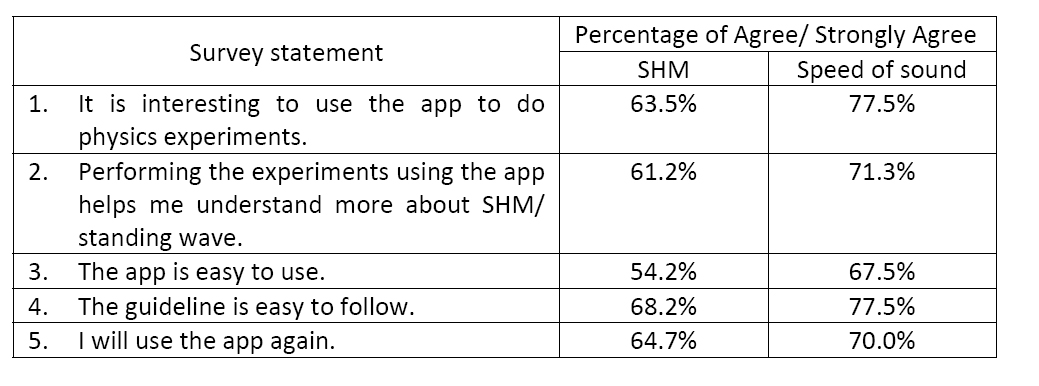
|
![]() : Physics Experiments Utilizing Smart Phone as Detectors
: Physics Experiments Utilizing Smart Phone as Detectors
Description
The use of technologies in teaching and learning has been widely received as a necessity in higher-education these days. Genuinely research-type investigations are usually possible only in specifically designed courses (such as final-year project), depriving much of chances for students’ scientific research possibilities. One of the reasons for such a lack of opportunities is the difficulty to obtain facilities that are widely available for them to perform such tasks. The experimental equipment are generally highly specific, designed for particular experiments and are normally purchased by the academic departments concerned, limiting their usage during designated class durations. However, there are various readilyavailable integrated sensors, such as the built-in accelerometers, light sensors and magnetometers in smart phones that are capable of performing high quality measurements. This provides an interesting possibility of performing experiments outside school laboratories, dramatically increasing the potential experiments and even permits project-type and research-based experiments in many subjects.
Based on these, we developed in the project an App which can extract the information from the sensors of the smart phone according to external physical stimuli (such as force, vibration, light intensity and magnetic field intensity). With the App that can collect and manipulate data from most/all available sensors in the smart phones with a well-designed interface, students can perform research-based investigation and apply theories they learned during lectures in an easy-to-access and readily available way in their daily lives using their own smart phones. Besides, the ability for students to perform experiments at authentic situations (outside laboratories) should boost their incentives of performing the work. Follow this link to see what the App looks like: http://www.polyu.edu.hk/edc/tdg/userfiles/file/42B2_APsensor.pdf.
The App with two sets of investigation guidelines on SHM (simple harmonic motion) and speed of sound measurement were launched in the course of AP10007 (Applied Physics Laboratory, enrolment ~80, with a total of 12 experiments) via Blackboard, during Sem 2 of 2014/15. The workflow of each pilot session is as follow: before the experiment, the working principle of the corresponding sensors used in the smart phones was briefly introduced to the students. The students then performed the experiments according to the investigation guidelines.
Evaluation
At the end of the session, a survey of 5-point scale (1: Strongly Disagree, 2: Disagree, 3: Neither Agree or Disagree, 4: Agree, 5: Strongly Agree) was conducted to collect the students’ feedback on the App and the investigation guidelines.
The survey aimed at collecting the students’ view on whether they found it interesting and gained subject knowledge in using the App to do experiments, the user friendliness of the app and the guidelines, and whether they will use the app again. The percentages of students indicating “Agree” or “Strongly Agree” on the survey statements are summarized in Table I.
Table I. Percentages of students indicating “Agree (4)” or “Strongly Agree (5)” on the survey statements

The majority of students indicated positive feedback on using the App to perform experiments. A more positive feedback was obtained in the speed of sound measurement. It may be attributed to the innovative method (by measuring the distance between nodes of standing waves produced by sound) to compute the speed of sound using daily necessities such as a vase, the speaker and the microphone of smart phones. It is encouraging that about 65-70% of students showed that they will use the app again.
The project team believes that this will increase students’ interest in performing experiments at authentic situations and apply theories they learned during lecture in daily live situations. The project team plans to extend the project (performing physics experiments utilizing smart phone as detectors) to other physics subjects after fine-tuning the user interface of the App to enhance its user friendliness.
Disclaimer
The experiences reported in this section are collected from the project leaders. EDC is not liable for the accuracy of information and possible infringements of copyright associated with individual cases.